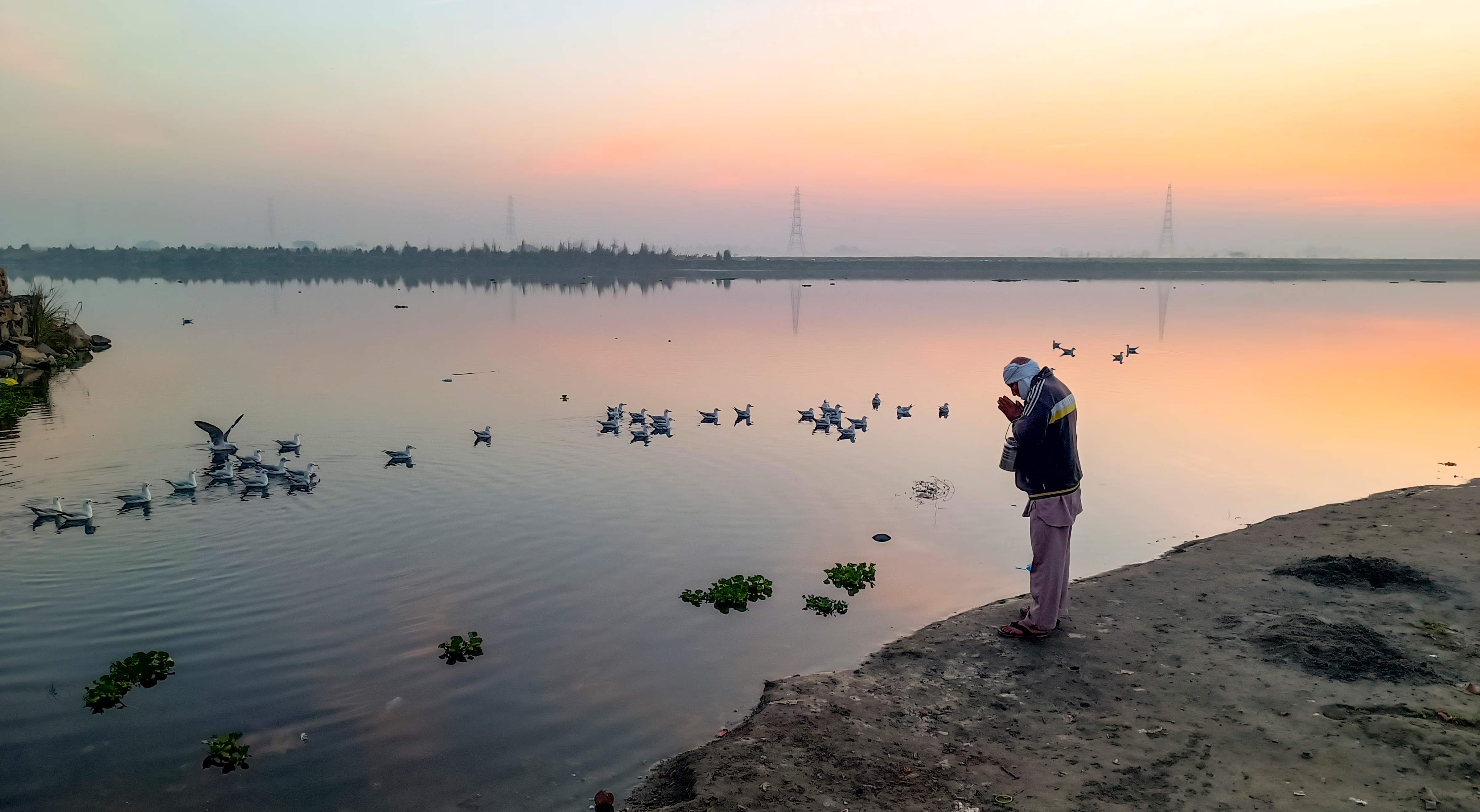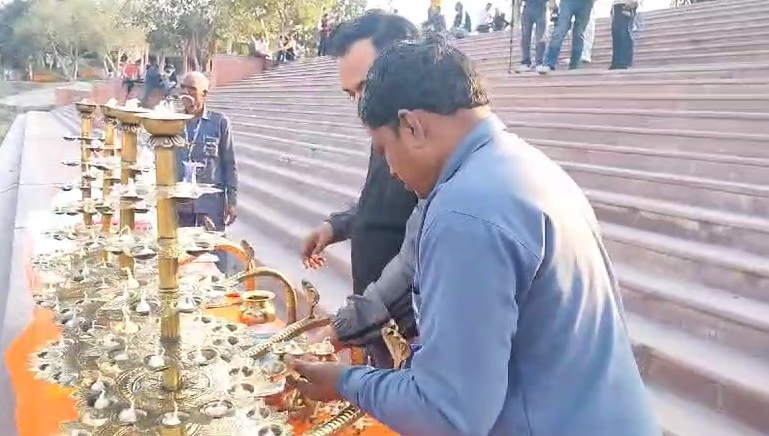Rekha Gupta of BJP has taken oath as the Chief Minister of Delhi today. She promptly resumed work and will hold her first cabinet meeting. Rekha Gupta arrived at the Delhi Secretariat at 3 PM and took charge. She will visit Vasudev Ghat of Yamuna Bazaar at 5 PM,
where she will also perform the Yamuna Aarti. The new Delhi cabinet's first meeting is scheduled at 7 PM. New ministers will first visit the Yamuna and then attend the cabinet meeting. Cleaning the Yamuna is a significant issue in the BJP manifesto, crucial in the recent elections.
Interestingly, the Yamuna's history in Delhi wasn't always grim. During the British era, its water was safe for drinking and bathing. During the Mughal Sultanate, the Yamuna not only fortified Delhi's defenses but quenched the major city's thirst with Shah Jahan's Shahjahanabad city and Red Fort's fortification.

Source: aajtak
The History of Yamuna's Pollution in Delhi
This segment of history has been chronicled by environmentalists Anil Agarwal and Sunita Narain in their book (Culture of Drops). The book reveals that Shah Jahan laid the foundation of Shahjahanabad city along with the creation of Red Fort. He commissioned architect Ali Mardan Khan specifically to channel Yamuna waters through the city into the fort.
Ali Mardan Khan Brought Yamuna Water to Red Fort
Ali Mardan Khan channeled the Yamuna into the palace through a canal named after him, also known as Faiz Canal. In addition, he repaired Tughlaq's existing canal to direct the Yamuna flow. This canal is still near Najafgarh at Delhi's border. Before entering Delhi, the Ali Mardan Canal irrigated 20 km of gardens. Many small bridges like Chadarwala Bridge, Pulbangesh, and Bholu Shah Bridge were constructed on this canal. The canal entered the city near Bholu Shah Bridge and divided into three parts, supplying Oklha, present-day Qutub Road, and Nizamuddin areas. History assigns this canal the name Starry Canal.
The second branch reached Chandni Chowk. Near the Red Fort, it turned right, passed through Faiz Bazaar, and fell into the Yamuna River beyond Delhi Gate. Another branch turned into the Yamuna near Old Delhi Gate. Another branch, parallel to Old Delhi Station Road, entered the Red Fort.

Source: aajtak
The Canal Water Kept the Fort Cool
The canal filled several basins within the fort, keeping it cool; it was called Nahar-e-Faiz at Chandni Chowk and Nahar-e-Bahisht inside the palace. Despite the canal drying from 1740 to 1820, it was consistently maintained.
In 1843, Shahjahanabad had 607 wells, 52 of which yielded sweet water. Later, many wells were sealed as sewage from dirty canals filled them. In 1890, this water stopped flowing inside the walled city, marking a shift that allowed large-scale pollution in the Yamuna, which began to deteriorate. Remarkably, even during the British period up to 1920, many Delhi villages used Yamuna water for drinking and bathing.
Here's a story of the Yamuna in Delhi, a tale when pumps, electricity, and chemicals like chlorine-ammonia were absent, yet it was a vital city. People drank from pitchers filled from wells and stepwells. The water levels in these wells were fed by canals that circled back to the Yamuna. Now, the Yamuna is only a channel for debris, waste, and drains.




